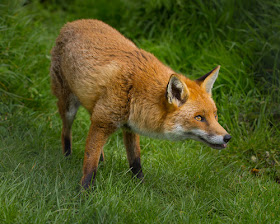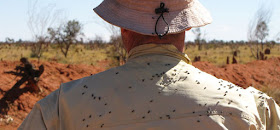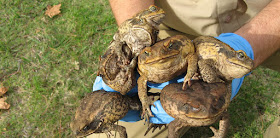Thursday, June 1, 2017
5 Animals That Have Gone Wild in Australia
Australian scientists are looking to use a fish virus to control the exploding population of European carp that is damaging freshwater ecosystems in the country’s agricultural heartland. Biocontrol agents have been previously successful in controlling rabbit plagues. Scientists and lawmakers hope the koi herpes virus CyHV3 can do a similar job with the invasive fish known by most Australians as the “cockroach of the waterways.” But the country’s past experience of controlling so-called “alien” species has been mixed.
Here are five animals that have gone wild in Australia:
1. Rabbits
Rabbits were introduced to Australia in 1859 by a wealthy farmer who was eager to hunt them. The rabbits escaped and over the course of 70 years, they fanned out to cover most of the country—the fastest mammal invasion, according to government scientists. In 1950, scientists released the Myxomatosis virus which killed 500 million rabbits, though 100 million survived. Their numbers today are a fraction of pre-Myxomatosis levels, but rabbits still cause an estimated 200 million Australian dollars (US$149.2 million) in economic damage annually.
2. European Red Foxes
Like cats, foxes were introduced to Australia by settlers in the 1830s for hunting. They also spread quickly. Foxes are now found in all states except Tasmania and are a common predator in all areas outside the northern tropics. The fox is even seen in major cities and is blamed for numerous mammal extinctions or population declines. Controls include shooting and dropping poison bait from planes. But the fox population today still numbers more than 6 million.
3. Cats
Cats arrived with British settlers. Feral cats are now being blamed by scientists for a second wave of animal extinctions in Australia. With their population estimated at up to 23 million, these cats are believed to kill 75 million native animals each night, according to the Commonwealth Scientific and Industrial Research Organisation and the Australian Wildlife Conservancy, including birds, lizards and even small kangaroos. Scientists have tried biological control, but effective control requires trapping, fences and shooting.
Associated Press
4. Flies
An average cow drops up to 12 dung pads every day, according to government scientists. With more than 28 million cattle, this is a huge amount of dung and contributes to Australia’s fly plagues. Each pad can produce up to 3,000 bush flies and waving them away has become known as the “Aussie salute.” Since 1969, the country has imported dung beetles from Africa and southern Europe to break down dung, helping control disease and health hazards spread by flies.
5. Cane Toads
Toxic South American cane toads were introduced to Australia in 1935 in an effort to contain two types of cane beetles that were ravaging sugar crops. Imported from Hawaii by the government’s Bureau of Sugar Experiment Stations, the toads—which weigh up to 4 pounds—had no impact on the beetles. But they have quickly marched across Australia’s northern tropics, killing native predators and birds that aren’t used to their toxins.






No comments:
Post a Comment